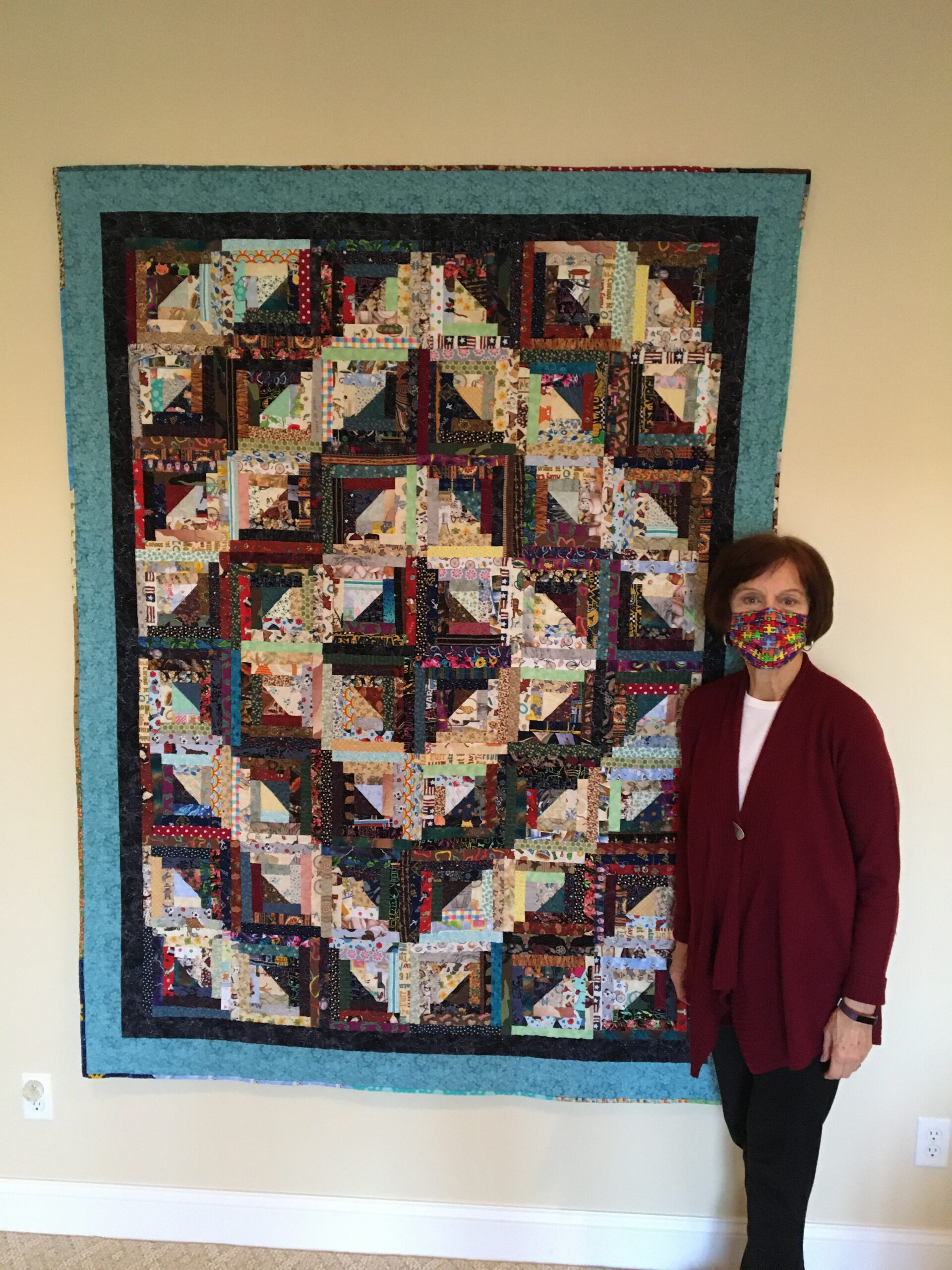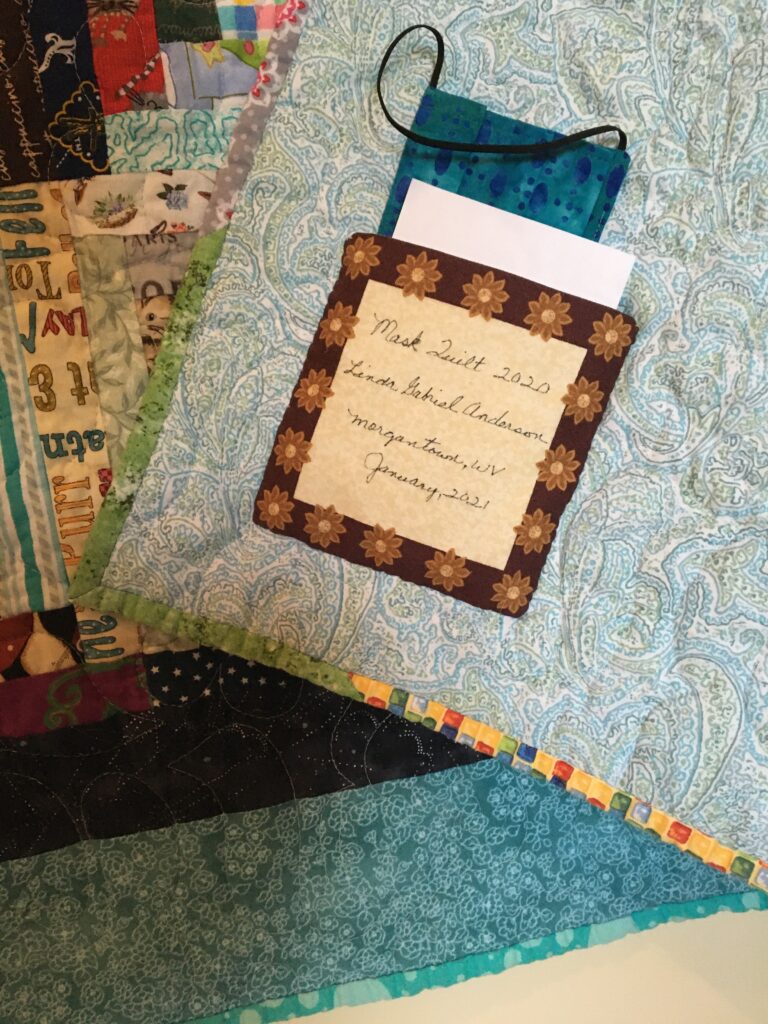A local seamstress made a quilt out of material scraps left over from making over 2,000 masks during the first year of the COVID-19 pandemic.
Linda Anderson boasts many titles: retired medical technologist, volunteer at Animal Friends Thrift Shoppe, seamstress, sewer, wife and mother.
Most recently, friends have compared Anderson to Rosie the Riveter, the face of women in the workforce during World War II and a wartime symbol of female empowerment.
“Some of my friends said I was ‘Rosie the Maskmaker.’ I contributed to the effort. This was a war, and anything that we could do to help, we did,” Anderson said.
Anderson has been sewing for most of her life and began quilting about 25 years ago, she said.
Sometimes you need to be prepared for unexpected situations, and having a well-stocked first aid kit can make all the difference.
As Linda Anderson knows from her own experiences, readiness is key. Whether you’re dealing with a small cut or a more serious injury, a first aid kit provides the essential supplies needed to address a variety of health concerns.
To ensure you’re equipped with the right items, it’s a good idea to check resources like the e-First Aid Supplies website.
They offer a range of first aid kits tailored to different needs and settings, helping you stay prepared for any emergency.
Ensuring you have the proper supplies is just one part of being prepared for an emergency. Equally important is having the knowledge to use those supplies effectively, and this is where first aid and CPR training come into play.
Knowing how to administer CPR, recognize the signs of a heart attack, or handle common injuries can make a life-saving difference in critical situations. First aid and CPR courses are designed to equip individuals with the essential skills and confidence needed to respond appropriately during emergencies, helping to minimize harm while waiting for professional medical help.
Those seeking to enhance their first aid knowledge, training providers like Coast2Coast for exceptional solutions offer comprehensive courses that cover a wide range of emergency scenarios.
With their hands-on approach and expert trainers, you can trust that you’re receiving top-tier education that will help you make a meaningful impact in emergency situations.
Last year, when the CDC recommended – and states began to require – individuals to wear masks to stop the spread of COVID-19, it was immediately apparent that those materials were difficult to find outside of a medical profession.
“People were clamoring for masks, and knowing that I could sew, I decided ‘Well, alright, maybe I could try to make some,’ ” Anderson said.
Initially, Anderson was only making masks for family and friends. Word began to spread that Anderson was making masks, and she began to receive requests from health departments, healthcare facilities and nursing homes for masks made in bulk.
“Anybody who needed them and wanted them and requested them, I made them and donated them,” Anderson said.
Anderson said that by the end of 2020, she had made and donated a total of 2,020 masks.
She also made and sold about 600 masks at Animal Friends Thrift Shoppe, but the proceeds from those masks were donated to the no-kill animal shelter the thrift shop supports.
Anderson didn’t accept compensation for any of the other masks she made, either.
“It was strictly meant to be a donation…I said ‘I am donating these, but if you feel the need, send me a of couple bucks per mask and I will make a donation to Animal Friends.’ And that’s what I did,” Anderson said.
The only money kept by Anderson was just enough for her to cover her only mask-making expense: elastic. The fabric used to make the masks was either fabric Anderson already had or fabric was donated by friends.
Anderson said it took roughly 15 minutes to make an individual mask, meaning Anderson has invested about 505 hours into her efforts in the last year.
Anderson doesn’t make masks much anymore, with the exception of a few seasonal masks for her relatives, because they are now easily accessible. Her project didn’t quite stop when masks started appearing in Target and Walmart, though.
“If a person is a quilter, they don’t throw any fabric away, ever. So I saved all the scraps from all of this donated fabric and I thought, ‘I need to do something with it,’ and so I made a quilt,” Anderson said.
The finished quilt was completed with a pocket, upon which is Anderson’s name, location and the date it was finished. Inside the pocket is one of Anderson’s handmade masks and a slip of paper detailing the first year of the COVID-19 pandemic and the story of how the quilt came to be.
Anderson intends to keep the quilt for now, but said she doesn’t know where it might end up. Her hope is that her children might pass the quilt down to future generations.
“It does have a story to tell. It tells the story of the pandemic and how these masks came to be,” Anderson said.
Karen Long, another volunteer at Animal Friends Thrift Shoppe and an acquaintance of Anderson’s since their days studying medical technology at West Virginia University, watched the mask-making project blossom.
Long said not only did Anderson’s mask-making endeavor aid the Morgantown community during a time when masks were scarce, it also contributed greatly to the financial state of the non-kill animal shelter after the economically challenging statewide shutdown.
“When we had to shut down for a period of time when we were basically all staying home, obviously Animal Friends was not making money for the no-kill animal shelter. So when we came back and we started selling [Anderson’s] masks there, plus her donations, it really made a difference to the no-kill animal shelter,” Long said.
Long praised Anderson’s sewing and quilting abilities, especially her fast pace and eye for color, and said many customers of Animal Friends Thrift Shoppe have asked about the masks since Anderson stopped making them for those outside her group of family and friends.
“I think it’s an admirable thing that she did,” Long said.
TWEET @DominionPostWV





